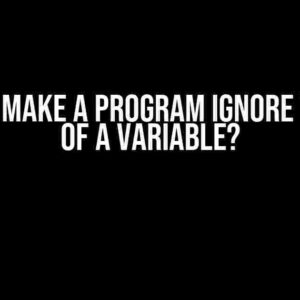Are you tired of your EditForm.OnValidSubmit event firing uncontrollably, leaving you with a tangled mess of code and a hint of frustration? You’re not alone! This article will guide you through the treacherous waters of errant submissions, providing you with the clarity and direction you need to tame the beast.
The Problem: Understanding the EditForm.OnValidSubmit Event
The EditForm.OnValidSubmit event is a crucial part of form submission in Power Apps. It allows developers to execute custom logic when the form is submitted successfully. However, when this event is called four times in rapid succession, it can lead to unintended consequences, such as:
- Multiple database writes or API calls, resulting in duplicated data or performance issues
- Unnecessary calculations or processing, causing slow application performance
- Confusing error messages or exceptions, making it difficult to diagnose the issue
Why Does EditForm.OnValidSubmit Get Called Multiple Times?
There are several reasons why the EditForm.OnValidSubmit event might get called multiple times:
- Accidental Double-Clicks: Users may inadvertently click the submit button multiple times, triggering the event repeatedly.
- Rapid Form Submissions: In high-traffic applications, multiple users may submit the form simultaneously, causing the event to fire multiple times.
- Browser or Device Issues: Browser quirks, device limitations, or network connectivity problems can cause the event to be triggered erratically.
- Code Errors or Inefficiencies: Poorly written code, incorrect form configurations, or inefficient data processing can lead to unintended event firings.
Solutions to the EditForm.OnValidSubmit Conundrum
Now that we’ve explored the possible reasons behind the issue, let’s dive into the solutions to prevent the EditForm.OnValidSubmit event from being called four times in rapid succession:
Solution 1: Debounce the Event
Data: {
timeout: null,
OnValidSubmit: function(editContext) {
if (this.timeout) {
clearTimeout(this.timeout);
}
this.timeout = setTimeout(function() {
// Your custom logic goes here
console.log("EditForm.OnValidSubmit called");
}, 500); // 500ms debounce interval
}
}In this solution, we use a debounce mechanism to delay the execution of the custom logic by 500ms. This allows the event to be triggered only once, even if the user clicks the submit button multiple times in quick succession.
Solution 2: Implement a Flag-Based Approach
Data: {
submitted: false,
OnValidSubmit: function(editContext) {
if (!this.submitted) {
this.submitted = true;
// Your custom logic goes here
console.log("EditForm.OnValidSubmit called");
setTimeout(function() {
this.submitted = false;
}, 500); // 500ms delay to reset the flag
}
}
}Here, we introduce a flag (submitted) to track whether the event has already been triggered. If the event is fired again within the 500ms window, the code inside the if statement is skipped, preventing multiple executions.
Solution 3: Use a Queue-Based Approach
Data: {
queue: [],
OnValidSubmit: function(editContext) {
this.queue.push(editContext);
if (this.queue.length === 1) {
this.processQueue();
}
},
processQueue: function() {
if (this.queue.length > 0) {
var editContext = this.queue.shift();
// Your custom logic goes here
console.log("EditForm.OnValidSubmit called");
setTimeout(this.processQueue, 500); // 500ms delay between processing
}
}
}In this solution, we utilize a queue to store the edit context objects. When the event is triggered, the edit context is added to the queue. The processQueue function is called to process the queue, executing the custom logic for each item in sequence, with a 500ms delay between each processing.
Additional Best Practices to Prevent Multiple Submissions
In addition to the solutions above, consider implementing the following best practices to further prevent multiple submissions:
| Best Practice | Description |
|---|---|
| Disable the Submit Button | Disable the submit button after the first click to prevent accidental double-clicks. |
| Implement Server-Side Validation | Validate user input on the server-side to ensure data integrity and prevent duplicate submissions. |
| Use a Unique Identifier | Generate a unique identifier for each form submission to detect and prevent duplicate submissions. |
| Implement a Throttle Mechanism | Implement a throttle mechanism to limit the frequency of form submissions, preventing rapid-fire submissions. |
Conclusion
In conclusion, the EditForm.OnValidSubmit event being called four times in rapid succession can be a frustrating issue, but with the right solutions and best practices, you can tame the beast and ensure a seamless user experience. By implementing debounce, flag-based, or queue-based approaches, and combining them with additional best practices, you’ll be well-equipped to handle the challenges of form submission in Power Apps.
Remember, a well-crafted solution is not only about solving the problem at hand but also about considering the broader implications of user behavior, code efficiency, and data integrity. By taking a holistic approach, you’ll be able to create robust and scalable applications that delight your users and meet their needs.
Frequently Asked Question
Stuck with the EditForm.OnValidSubmit mystery? Get the answers to your burning questions below!
Why is EditForm.OnValidSubmit called 4 times in rapid succession?
This phenomenon is often caused by the submit button being clicked multiple times in quick succession, resulting in multiple form submissions. To prevent this, you can add a debounce mechanism or disable the submit button after the first click.
Is it abug in the EditForm component?
No, it’s not a bug in the EditForm component. The issue lies in the way the component is used and the lack of submit handling mechanisms. By adding proper submit handling and preventing multiple submissions, you can avoid this issue.
How can I prevent multiple form submissions?
You can prevent multiple form submissions by adding a flag to track the form submission status. Set the flag to true when the form is submitted, and reset it to false when the submission is complete. Then, check the flag status before submitting the form to prevent multiple submissions.
Will using a debounce function solve the issue?
Yes, using a debounce function can help solve the issue. A debounce function will delay the form submission for a short period, allowing multiple rapid clicks to be treated as a single submission. This can be achieved using a library like Lodash or by implementing a custom debounce function.
What are some best practices to avoid EditForm.OnValidSubmit being called multiple times?
Some best practices include using a submission flag, debouncing the form submission, disabling the submit button after the first click, and using a loading indicator to prevent further submissions while the form is being processed.



